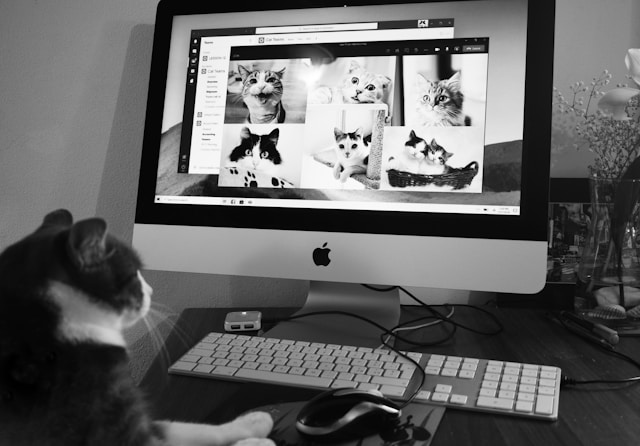Managing a multi-cat household presents unique challenges and opportunities. With careful planning and attention, you can create a harmonious environment where all your feline companions feel secure and happy. This guide provides essential tips for managing multi-cat households, addressing common issues, and ensuring the well-being of every cat in your home.
1. Understanding Cat Behavior in Multi-Cat Households
Territorial Nature of Cats
- Territorial Instincts: Cats are naturally territorial animals. They may exhibit territorial behavior, such as marking and aggression, when they feel their space is threatened or overcrowded.
- Introducing New Cats: Introducing new cats to an existing household requires careful planning to prevent territorial disputes and reduce stress.
Social Dynamics
- Hierarchy and Social Structure: Cats establish social hierarchies within multi-cat households. Understanding these dynamics can help prevent conflicts and promote harmony.
- Individual Personalities: Each cat has a unique personality. Recognizing and respecting these differences is key to managing interactions and preventing behavioral issues.
2. Creating a Harmonious Environment
Space and Resources
- Adequate Space: Ensure your home provides enough space for each cat to establish their own territory. Overcrowding can lead to stress and aggression.
- Multiple Resources: Provide multiple resources, such as litter boxes, food and water bowls, scratching posts, and resting areas, to prevent competition and reduce stress.
Litter Boxes
- One Litter Box Per Cat: The general rule is to have one litter box per cat, plus one extra. This helps prevent territorial disputes and ensures every cat has access to a clean box.
- Box Placement: Place litter boxes in various locations throughout the house, ensuring they are easily accessible and away from high-traffic areas.
Feeding Stations
- Separate Feeding Areas: Set up separate feeding stations for each cat to prevent food-related conflicts. Consider using feeding stations in different areas to reduce competition.
- Free-Feeding vs. Scheduled Meals: Depending on your cats’ needs, you may choose to free-feed or schedule regular meal times. Monitor each cat’s eating habits and adjust accordingly.
3. Addressing Behavioral Issues
Aggression and Fighting
- Identify Triggers: Observe and identify triggers for aggressive behavior, such as competition for resources or sudden changes in the environment.
- Gradual Introductions: When introducing new cats, use gradual introductions to minimize stress and reduce the likelihood of aggression. Allow cats to adjust to each other’s presence gradually.
Stress and Anxiety
- Safe Spaces: Provide safe spaces where cats can retreat and feel secure. This could be a designated area with their favorite toys, scratching posts, and resting spots.
- Calm Environment: Maintain a calm and stable environment. Avoid sudden changes or disruptions that could increase stress and anxiety among your cats.
4. Health and Hygiene
Regular Veterinary Care
- Routine Check-ups: Schedule regular veterinary check-ups for all cats to monitor their health and catch any potential issues early.
- Vaccinations and Parasite Control: Ensure all cats are up-to-date on vaccinations and parasite control. This helps prevent the spread of diseases and maintains overall health.
Grooming and Hygiene
- Regular Grooming: Brush your cats regularly to reduce shedding and prevent matting. Grooming also helps in monitoring for any skin issues or parasites.
- Clean Litter Boxes and Living Areas: Maintain cleanliness by regularly cleaning litter boxes, feeding stations, and other high-traffic areas to prevent the spread of germs and odors.
5. Enrichment and Interaction
Interactive Play
- Stimulating Toys: Provide a variety of interactive toys to keep your cats mentally and physically stimulated. Toys that encourage hunting and play help reduce boredom and aggression.
- Playtime Routine: Establish a regular playtime routine to engage with each cat individually. This helps build trust and strengthen the bond between you and your cats.
Environmental Enrichment
- Vertical Space: Incorporate vertical space, such as cat trees or shelves, to allow cats to explore and establish their own territories.
- Scratching Posts and Climbing Structures: Provide scratching posts and climbing structures to satisfy natural instincts and reduce territorial disputes.
6. Managing Special Needs and Senior Cats
Special Needs Cats
- Medical Conditions: Cats with special needs, such as chronic illnesses or disabilities, may require additional care and attention. Adjust their environment and routine to accommodate their needs.
- Individual Care: Provide tailored care for special needs cats, including medication administration, special diets, and additional monitoring.
Senior Cats
- Senior Care: Senior cats may have different needs, such as joint support, dental care, and specialized diets. Ensure their environment is comfortable and accessible.
- Regular Monitoring: Monitor senior cats closely for any changes in health or behavior. Regular veterinary visits are essential for managing age-related issues.
7. Conflict Resolution and Mediation
Intervening in Fights
- Safe Separation: If a fight occurs, separate the cats safely and calmly. Avoid using physical force, as this can escalate the situation.
- Behavior Modification: Work on modifying the behavior of aggressive cats through training and positive reinforcement. Consult a professional behaviorist if needed.
Professional Help
- Behaviorist Consultation: If conflicts persist or are severe, consider consulting a feline behaviorist. They can provide tailored advice and strategies for managing multi-cat households.
- Veterinary Advice: Seek veterinary advice if behavioral issues are accompanied by health problems or if stress-related behaviors are affecting your cats’ well-being.
8. Conclusion
Managing a multi-cat household requires careful attention to the needs and behaviors of each cat. By understanding cat behavior, creating a harmonious environment, addressing behavioral issues, and ensuring health and hygiene, you can maintain a peaceful and happy home for all your feline companions. With patience, consistency, and the right strategies, you can foster a positive environment where every cat can thrive.











Leave a Reply